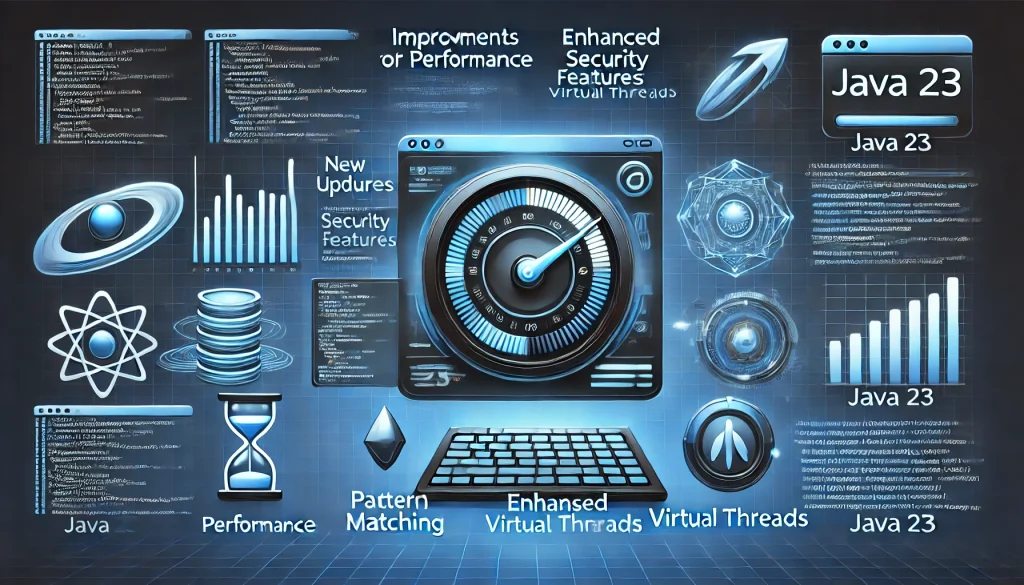
As the world of technology continues to evolve, the programming community is abuzz with excitement over Java 23. Launched with a slew of new features and optimizations, this update promises to redefine how developers interact with the language. But what makes it so significant? Let’s dive into what’s new, explore its key functionalities, and understand how it impacts the broader ecosystem of modern development.
Overview
October 2024 is a pivotal month for enthusiasts, as Java 23 introduces several groundbreaking updates that solidify its standing as one of the most versatile and reliable programming languages. First released over two decades ago, Java has continuously evolved, offering greater performance, security, and flexibility with each iteration. The Java Development Kit (JDK) 23 brings forward new enhancements designed to improve productivity, streamline development, and offer deeper integrations with modern tech stacks. This latest version emphasizes improvements in APIs, feature updates, and better user experience for developers working across industries.
Java 23’s Importance and Relevance

Java has always held a prominent spot in the world of programming languages, from building enterprise-grade applications to powering cloud solutions. With Java 23, the language’s evolution is more relevant than ever, offering developers a robust toolkit that supports modern application needs.
Recent Breakthroughs in Java 23
Java 23 introduces several notable enhancements to its platform that developers and enterprises can look forward to. One of the key breakthroughs is the improvement in Project Loom, which brings about lighter, more efficient threading. This innovation allows developers to handle thousands of threads without experiencing performance bottlenecks, which is crucial for modern applications that require high concurrency. It also plays a significant role in asynchronous programming, offering developers the tools to build high-performing, scalable applications with ease.
The update also focuses on improving performance for cloud-native development, a significant breakthrough that positions Java 23 as a critical tool for enterprises moving to the cloud. Additionally, Garbage Collection (GC) optimizations further enhance performance, enabling faster memory management, leading to more efficient execution of complex applications.
Emerging Applications of Java 23
In terms of its practical application, Java 23 is well-suited for building modern, complex systems. With enhanced support for API updates and better security protocols, it offers a stable environment for building microservices, enterprise applications, and high-performance cloud solutions. The OpenJDK 23 platform specifically highlights its commitment to facilitating modern application architectures by streamlining the integration of Java with Kubernetes and Docker, making it ideal for containerized environments.
Java’s robust framework and updated API integration also allow it to be a primary player in the realm of artificial intelligence (AI) and machine learning (ML). Java’s ecosystem provides vast libraries and frameworks like Deeplearning4j and MOA, which are now more efficiently supported with Java 23’s enhancements, opening up new possibilities in data science and predictive analytics.
Java 23 and Integration with Other Technologies

The tech industry thrives on collaboration between various technologies, and Java 23 makes it easier to integrate Java-based solutions with other platforms. With API updates that cater to modern software architectures, it enables smoother integration with cloud platforms like AWS and Azure. It also offers improved compatibility with RESTful services, allowing developers to efficiently handle requests and responses from external services.
Additionally, Java 23’s native support for WebAssembly (Wasm) has created a buzz among developers who are keen on building high-performance web applications. The seamless support for serverless computing platforms, such as AWS Lambda and Google Cloud Functions, also makes it a viable option for microservices and low-latency applications.
User Experience Improvements
User experience has become one of the top priorities for development teams, and Java 23 caters to this demand by providing an optimized development environment. The refined APIs give developers more flexibility, reducing redundant code and boosting overall productivity. For example, the updated Pattern Matching and Records API allow developers to write concise, maintainable code with fewer boilerplates, leading to a better coding experience.
For users running Java-based applications, the new Vector API offers faster computation, especially for data-intensive operations such as big data analytics and financial modeling. In addition, Java 23’s commitment to improved security through updated TLS and cryptography libraries makes it an ideal platform for handling sensitive information, improving trust in Java-based web applications.
Challenges Developers Face with Java 23
While it presents several advantages, there are a few challenges developers may encounter. One of the main concerns is the learning curve associated with adopting some of the newer features, especially for teams that have been working with older versions of Java. For instance, integrating Project Loom into existing codebases requires a shift in how threading and concurrency are managed, which could introduce complexities for teams without significant experience in modern concurrency models.
Another potential challenge lies in the implementation of sealed classes, which restrict the inheritance hierarchy and require careful planning during the design phase of an application. Although these features offer more control over the codebase, they may slow down development initially as developers learn how to implement them effectively.
Additionally, while Java 23’s integration with cloud technologies is a powerful advantage, developers may face hurdles when migrating legacy applications to cloud-native environments, requiring careful strategizing and code refactoring.
Conclusion
In conclusion, Java 23 continues the legacy of innovation that has kept it at the forefront of modern development for over two decades. With key breakthroughs like Project Loom, enhanced Garbage Collection, and deep integration with cloud and container technologies, Java 23 offers developers a modern platform that keeps up with the evolving demands of the tech landscape.
Its improved API updates, focus on developer productivity, and support for emerging technologies like AI and microservices make it a strong contender for building next-generation applications. However, like any new technology, Java 23 comes with its own set of challenges, such as mastering new features and integrating them into existing workflows.
For developers looking to build secure, scalable, and high-performance applications, it is an excellent tool that offers both the flexibility and robustness needed to tackle the complexities of today’s development environment. Its features ensure that Java remains a top choice for enterprises and developers alike. Whether you’re building a cloud-native solution or a high-performance web application, Java 23 provides the necessary tools and support to turn your vision into reality.
FAQs
What are the key features introduced in Java 23?
Java 23 brings improvements to Project Loom, better Garbage Collection, enhanced API integration, and performance optimizations for cloud-native development.
How does Java 23 improve user experience for developers?
Java 23 refines APIs, making coding more efficient and productive, and introduces new features like the Vector API for faster data computations.
What are the main challenges when adopting Java 23?
Developers may face a learning curve with features like Project Loom and sealed classes, and legacy systems may require careful refactoring when migrating to cloud-native environments.
Resources
- Infoworld. JDK 23: The New Features in Java 23.
- Oracle. Java 23 Release Notes.
- Symflower. What is New in Java 23.
- Bulldogjob. Every New Feature in Java 23.
- Medium. What to Expect in Java 23.
